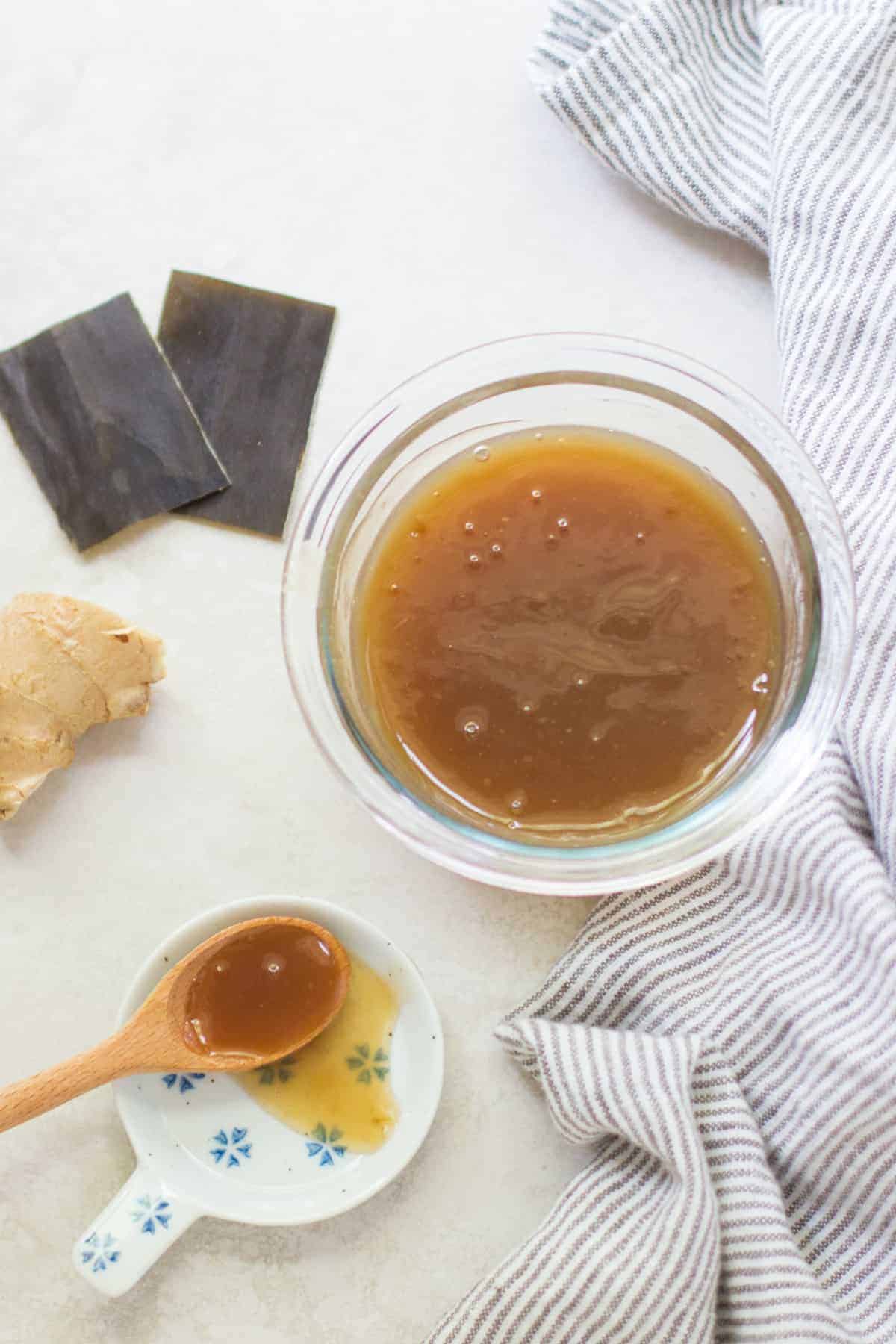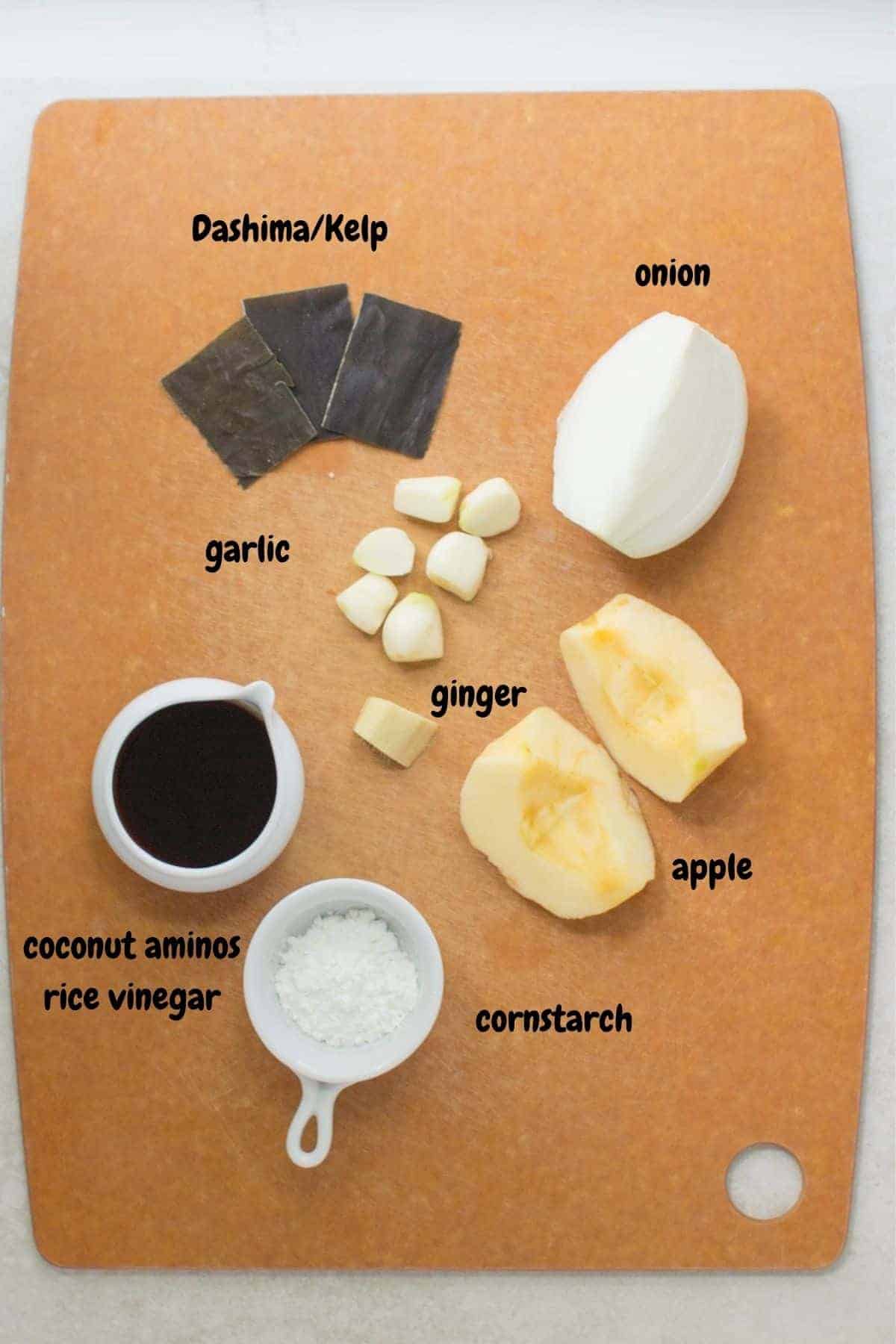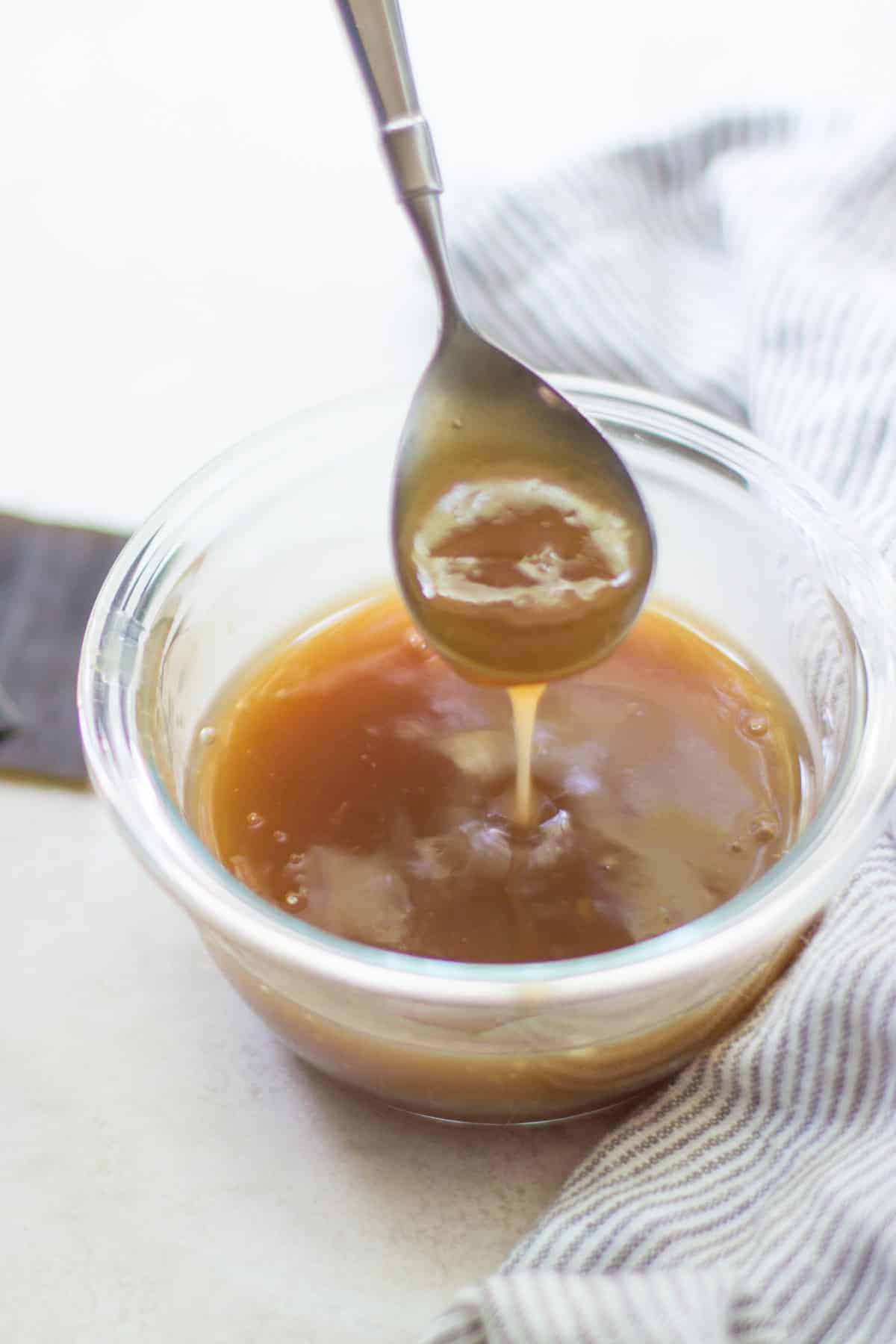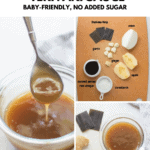This post may contain affiliate links. Please see our disclosure policy for more details.
Here’s a healthy teriyaki sauce recipe for your baby and the entire family to enjoy! While it’s low sodium, this recipe is delicious and versatile. Enjoy as a marinade or as a sauce.

The authentic Japanese teriyaki sauce consists of soy sauce, sake, mirin, and sugar. The westernized version usually includes garlic, ginger, honey, and cornstach.
I don’t even know what to call my version. As I set out on the nearly impossible mission to develop a baby-friendly Asian sauce, I had to find creative ways to forego added sugars and cut back on sodium as much as possible without sacrificing flavor.
I mean who adds dashima/kelp to teriyaki sauce?! But trust me. It works! I guess I can call this a hybrid of Japanese and western-style with a touch of Korean? 😉
So let’s get right to it – low sodium teriyaki sauce!
Ingredients

Making teriyaki sauce at home is easy and healthier. Here’s what you’ll need:
Dashima or kelp – As I set out to cut back on the sodium content as much as possible while maximizing flavor, this ingredient proved to be the secret weapon. Dashima is very commonly used to make the broth base in so many Korean recipes. It contains glutamic acid, which is an amino acid that provides an umami flavor and enhances the flavor of the other ingredients.
I like to purchase pre-cut ones for convenience. Buy a bag and keep in the freezer. If you want to enjoy it in a soup, try this non-spicy Korean tofu soup.
Coconut aminos – made from coconut nectar and sea salt, it tastes sweeter and lighter than soy sauce. It also contains significantly less amount of sodium. It’s soy and wheat-free, so if your baby is allergic, this will be a great alternative to soy sauce.
Expert Tips!

A note about dashima or kelp – to maximize flavor, pre-soak for at least 30 minutes (longer the better, if you have time) prior to boiling it. You’ll notice some white powder on the surface. Don’t wash it off as it’s the natural flavor enhancer.
You also don’t want to cook it for too long as it will start to turn the sauce slimy and leaven an unpleasant taste.
For the slurry:
- Combine 1 tablespoon of cornstarch with 2 tablespoons of cold water. Be sure to whisk well until fully dissolved.
- Stir in slowly, whisking continuously until sauce thickens. Keep in mind it will continue to thicken as it cools so be sure to remove from heat before it reaches your desired consistency.
- If you’re planning to use this sauce as a marinade, add less cornstarch (1-2 teaspoons) and/or cook for shorter amount of time.
- If you want to enjoy it as a glaze or sauce, like in this teriyaki glazed salmon, then cook for longer.
- Again, the sauce will continue to thicken once it cools so DO NOT cook for too long. Otherwise, you’ll end up with jello.
Storage and Reheating
You can store this teriyaki sauce in the fridge for several weeks. The cornstarch will cause it to congeal overtime. Therefore, I recommend heating in a pot over gentle heat, whisking, until it thins out a bit. Add more water if you want to thin it out even further.
More Baby-Friendly Asian Recipes
- Orange sesame chicken with vegetables
- Low sodium moo goo gai pan
- Instant pot Korean chicken and potatoes
- Korean bulgogi
Subscribe to my newsletter and follow along on Instagram, Facebook, and Pinterest for all of the latest updates!

Low sodium teriyaki sauce
Ingredients
- 2 cups (500ml) water
- 3 squares kelp
- 1/2 medium apple, peeled (about 95g)
- 1/4 medium yellow onion (about 105g)
- 6 cloves garlic
- 1 inch fresh ginger
- 3 tablespoons coconut aminos
- 1 tablespoon rice vinegar
- 1 tablespoon cornstarch
- 2 tablespoons cold water
Instructions
- In a pot, soak kelp in water for at least an hour (see note)
- Bring the pot to a boil. Add apple, onion, garlic, and ginger. Cover, reduce heat to medium low and simmer for about 10 minutes.
- Remove kelp. Add coconut aminos and vinegar. Once pot comes to a boil once again cover, reduce heat to medium low an simmer for an additional 10 minutes.
- Turn off heat. Using a colander, strain all the remaining juices from apple, onion, garlic, and ginger, pressing out as much liquid as possible.
- In a small bowl, combine cornstarch and water. Whisk until smooth. If made in advance, be sure to restir the slurry just before adding it to the sauce as it will separate as it sits.
- Turn on heat. Once it comes to a gentle simmer slowly add the slurry to the pot. Whisk continuously until you reach desired thickness, 5-8 minutes. Keep in mind it will continue to thicken once cooled.
Notes
- A note about dashima or kelp – to maximize flavor, pre-soak for at least 30 minutes (longer the better, if you have time) prior to boiling it. You’ll notice some white powder on the surface. Don’t wash it off as it’s the natural flavor enhancer. You also don’t want to cook it for too long as it will start to turn the sauce slimy and leaven an unpleasant taste.
- Combine 1 tablespoon of cornstarch with 2 tablespoons of cold water. Be sure to whisk well until fully dissolved.
- Stir in slowly, whisking continuously until sauce thickens. Keep in mind it will continue to thicken as it cools so be sure to remove from heat before it reaches your desired consistency.
- If you’re planning to use this sauce as a marinade, add less cornstarch (1-2 teaspoons) and/or cook for shorter amount of time.
- If you want to enjoy it as a glaze or sauce then cook for longer.
- Again, the sauce will continue to thicken once it cools so DO NOT cook for too long. Otherwise, you’ll end up with jello.















I want to make this tonight with salmon! I don’t have coconut amino (not even sure what that is…). Is there an alternative or do I just leave it out?
Thanks!
Hi! Coconut aminos is a low-sodium alternative to soy sauce. You can use low-sodium soy sauce instead!
I don’t happen to have any kelp on hand. If the only seaweed I have is nori, would you suggest any changes to the recipe to account for that, or should I try to use something else (e.g., shiitake mushrooms) for the umami?
Kelp is pretty crucial but yes I would try adding shitake mushroom. Nori will just disintegrate